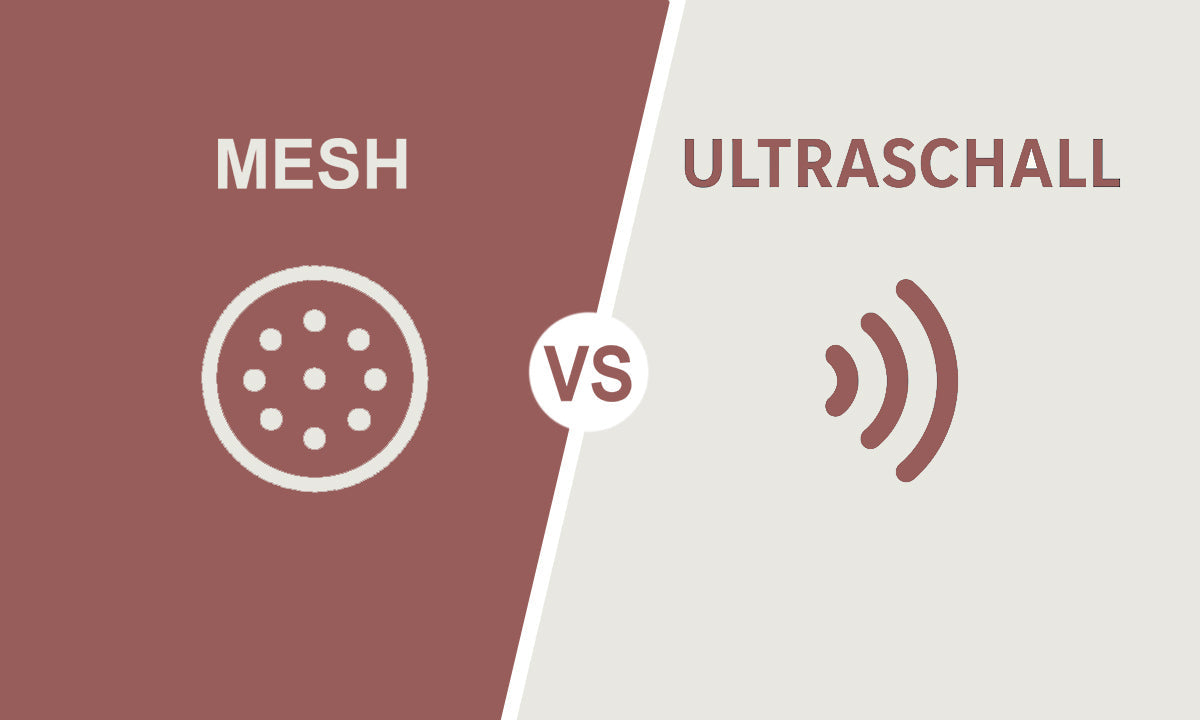Ultrasound vs. Mesh Nebulizer: Which Nebulizer Best Supports the Horse's Lungs?

Nebulizers are a valuable tool for horse owners to promote the respiratory health of their animals. They enable the targeted inhalation of medications or saline to effectively alleviate symptoms. When choosing the right device, various technologies are available. We compare the proven ultrasonic and the modern mesh nebulizers and highlight why the ultrasonic nebulizer is an excellent choice for many horse owners.
Why nebulizing is so valuable for horses
Inhalation therapy with a nebulizer allows active substances or natural solutions like saline to be delivered directly to where they are needed: the airways and lungs of the horse. This is especially helpful for conditions such as cough, chronic bronchitis, or allergic reactions, as the active substances can act locally and quickly without burdening the entire organism.
The efficiency of particle size: Ultrasound convinces
The size of the generated mist droplets is crucial for the penetration depth into the respiratory tract.
- Larger droplets (over 5 µm): Primarily act in the upper respiratory tract.
- Medium droplets (2-5 µm): Reach the bronchi and bronchioles.
- Fine droplets (0.5-2 µm): Reach the deepest lung areas (alveoli).
Modern ultrasonic nebulizers are capable of producing a high proportion of droplets in the optimal medium to fine range, enabling effective treatment of the entire lung of the horse.
The ultrasonic nebulizer: powerful and efficient for the horse's lungs
Ultrasonic nebulizers use high-frequency sound waves to transform liquids such as saline or medications into a fine, lung-penetrating mist.
- Excellent effect with saline solution for horses: Ultrasound nebulizers are characterized by their high nebulization rate. This means that a large amount of saline solution is converted into a fine mist in a short time, keeping the inhalation time for the horse pleasantly short. The generated droplets have an ideal size to penetrate deep into the airways and optimally unfold their beneficial effects – mucus dissolution, anti-inflammatory action, and humidification.
- Advantages:
- Fast and effective nebulization: The high nebulization rate saves time and ensures rapid distribution of the saline solution in the airways.
- Optimal particle size: Produces a high proportion of respirable particles that reach the entire lung.
- Comfortable application: The short inhalation time is well tolerated by most horses.
- Economical in operation: Generally lower costs for consumables compared to other systems.
- Robust and durable: Less prone to mechanical defects.
- Quiet operation
- Easy cleaning and disinfection
- Potential disadvantages:
- Theoretical warming: With very long applications, a slight warming of the liquid may occur, which usually does not matter for saline. However, a few very temperature-sensitive medications should not become too hot. The two-chamber system from Medizintechnik Hartwig ensures that the warmest spot on the inhaler is separated from the inhalate, thereby protecting the medication.
The mesh nebulizer: fine, but time-consuming
Mesh nebulizers use a vibrating membrane to generate the mist.
- Effect on brine for horses: Mesh nebulizers do produce a very fine mist, but the nebulization rate is often lower, which can extend the inhalation time and make the inhalation less effective.
- Advantages:
- Very fine particle size.
- Quiet operation.
- Compact and portable.
- Disadvantages:
- Lower nebulization rate, longer inhalation times, lower effectiveness.
- Higher maintenance effort and potentially higher costs for spare parts (membrane).
- Often higher acquisition costs.
- Often not suitable for different substances, as the mesh clogs, which significantly shortens the lifespan.
- Elaborate cleaning
Conclusion: Trust in the proven efficiency of the ultrasonic nebulizer
For horse owners seeking a fast, effective, and comfortable nebulization of saline to support their animal's respiratory health, the ultrasonic nebulizer is often the superior choice. It impresses with its high nebulization rate, enabling swift treatment, while simultaneously producing an optimal proportion of lung-penetrating particles that can reach deep into the airways. Its robust construction and generally straightforward operation make it a reliable partner in everyday stable life.
While mesh nebulizers have their advantages in terms of very fine particle size and compactness, the longer inhalation time, higher maintenance effort, and higher follow-up costs may be less practical in the equine sector.






